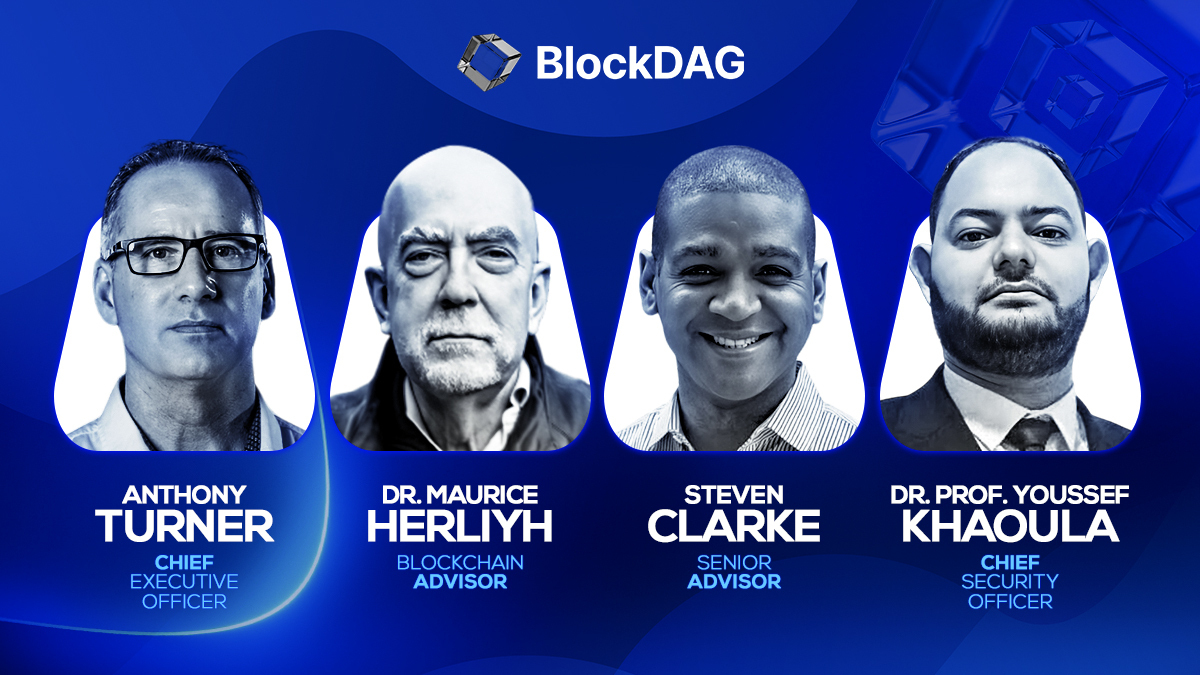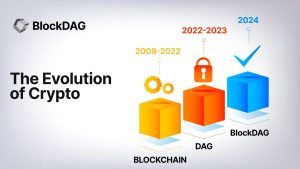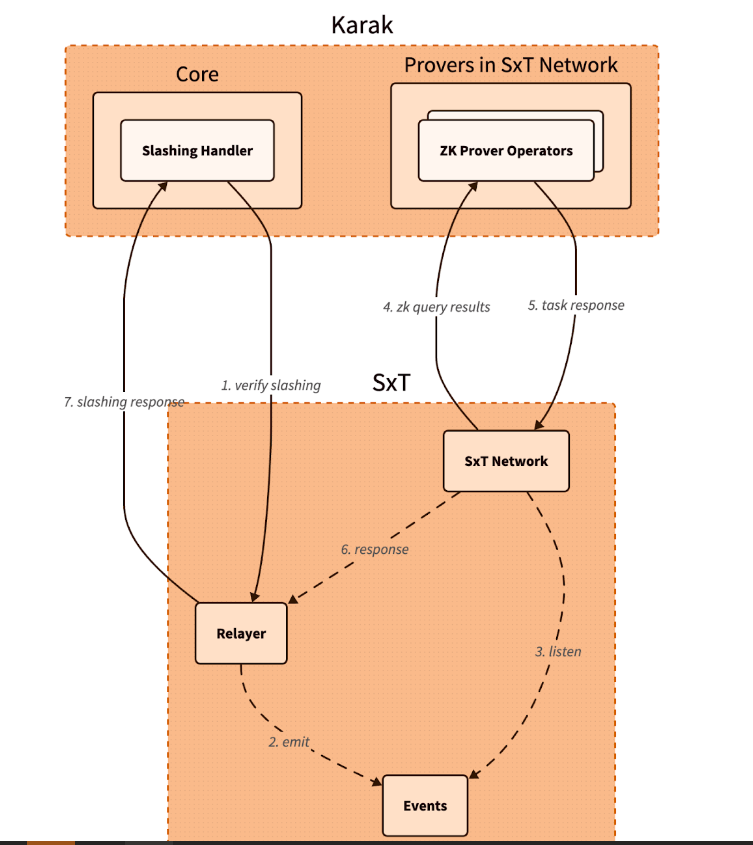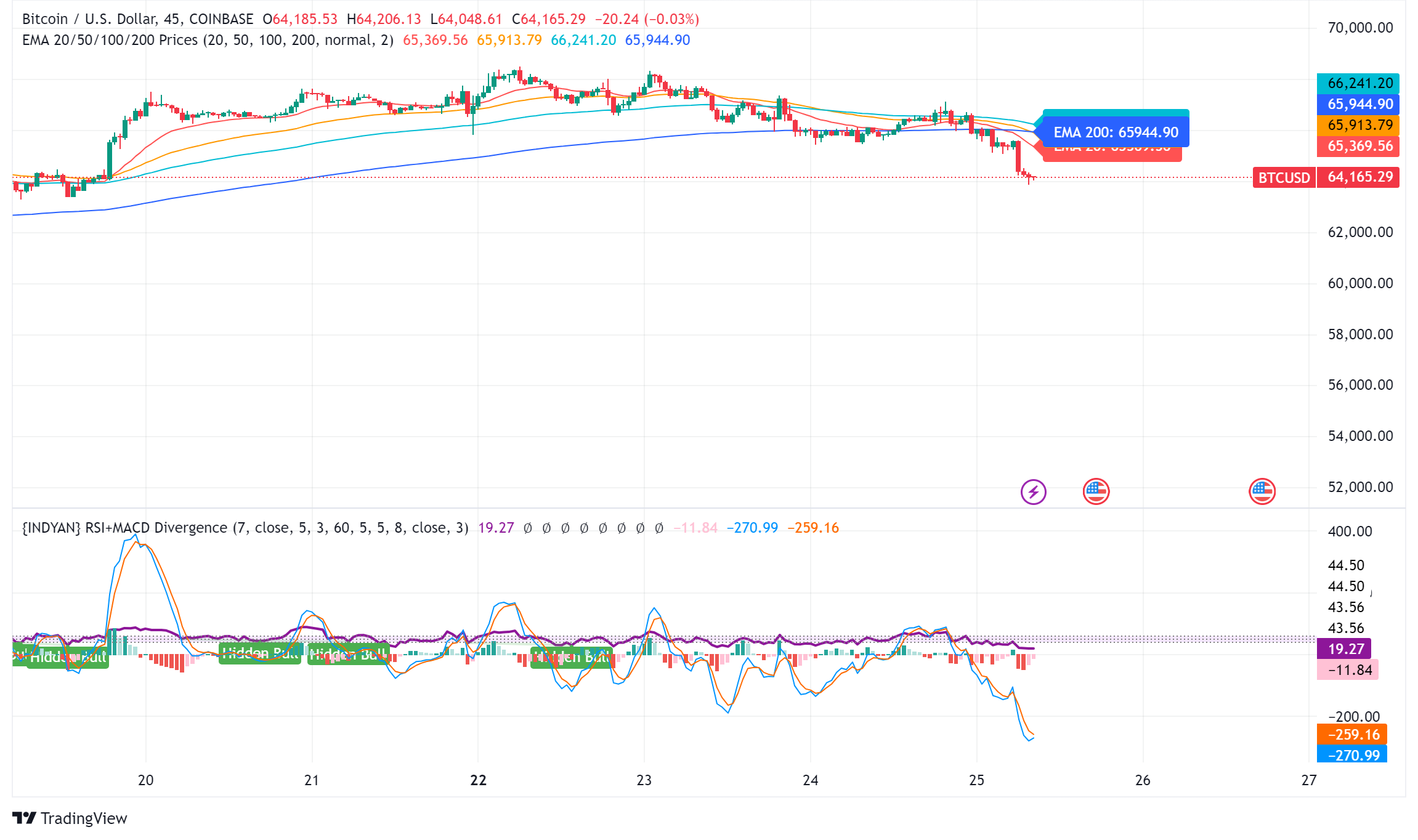Tech
Investing in the Blockchain Boom

Distributed ledger technology (DLT) and blockchain have made their way into business, finance, and many other industries. Their introduction to the mainstream following the rise in popularity of cryptocurrencies has created new investment vehicles, opportunities, and new sectors. Additionally, new business models using these advancements are emerging that improve workflows, data security, e-commerce, government processes, and much more.
A distributed ledger is a network of stored files in which every transaction is recorded. Blockchain was developed from the distributed ledger concept, but it enhances public use and security. Programs are used to confirm, validate, and archive information, and they can be accessed in near real-time by all participants.
In general, there are four broad areas for you to consider investing in: cryptocurrency itself, investment instruments linked to or holding cryptocurrency, non-fungible tokens, and businesses developing and implementing new products that use blockchain or distributed ledger technology.
Key Takeaways
- Many established tech companies are investing heavily in blockchain and distributed ledger technology applications.
- Cryptocurrencies are part of blockchain technology designed for transferring value; investors are also using them to store value, hedge other investments, and hold them for growth.
- Non-fungible tokens are part of the emerging metaverse design as ownership of digital assets becomes popular.
- Digital securities use blockchain to create traditional investments such as stocks and bonds.
- Web 3 is a concept of internet privacy and ownership being developed using blockchain technology.
Understanding Blockchain
Blockchain technology is similar to distributed ledger technology (DLT) but is specific to cryptocurrency and the ecosystems that have evolved from it. It uses encryption and verification methods to restrict access to append-only, where new data can be entered, but existing data can not be changed.
Blockchain use cases have exploded, with the technology making its way into everything from tokenizing pixel art to fantasy football leagues to digital worlds where you can buy virtual real estate.
Understanding Distributed Ledger Technology
DLT is used across enterprises to synchronize and share data in a ledger while verifying the accuracy of inputs and outputs. The span of industries using DLT continues to grow, encompassing supply chains, accounting, financial services, warehousing, shipping, and more.
Paramount among the benefits of DLT is its ability to reduce the costs of maintaining, securing, and verifying databases on a global scale.
The good news is that opportunities for investing in blockchain and DLT are abundant, giving you a chance to leverage the potential offered. How you choose to invest in blockchain technology will largely depend on the amount of risk you’re willing to incur and what interests you.
Companies Developing Blockchain Uses
You can invest in several companies that are researching and developing blockchain and DLT products and services. Many well-known companies are developing blockchains for business, and many more are creating them for in-house use. There are several markets you can choose from:
- Decentralized Finance
- Financial Technology
- Metaverse
- Web3
- Exchanges
Decentralized Finance
Decentralized finance (DeFi) is the concept of removing financial institutions from their role as third parties in transactions. The idea is to allow people to take control of their finances with digital wallets, peer-to-peer lending, and other financial services.
While cryptocurrency is part of DeFi, it is only the tip of the iceberg. DeFi is the all-inclusive term for all things financial that are not part of any traditional, centralized method of controlling money. Cryptocurrency, cryptocurrency exchanges, lenders, borrowers, and even insurance are part of this growing sector.
Financial Technology
Financial technology (Fintech) is the development and use of technology to improve existing financial services. The developments in blockchain technology are revolutionizing traditional services like lending, money transfers, and banking. Paypal is one of the most well-known examples of a fintech company—there are many more you can choose from to diversify your portfolio.
New blockchain uses are constantly emerging as more companies research ways to incorporate it into their industries and internal procedures.
Metaverse
The metaverse is one of the more difficult concepts to grasp that is expected to use blockchain. The metaverse is an emerging digital and ever-present world where virtual reality, augmented reality, and reality meet. The concept is to develop an immersive digital experience where a person can learn, work, play, and socialize.
Social media platforms, game developers, and technology companies are developing the hardware and software needed for this digital life experience. Meta (formerly Facebook), Advanced Microdevices (AMD), Nvidia, Amazon, and Epic Games are examples of companies that have expressed interest in metaverse products and services. Blockchain will play a large part in the metaverse as it develops.
Web 3 Companies
Web 3 companies are developing solutions that are reportedly set to change how the Internet works in the background. Blockchain technology is being used to create an infrastructure designed to restore privacy, ownership, and control to the masses.
Here are some of the emerging theories on how Web 3 will benefit everyone using blockchain technology:
- Your personal information will not be available to anyone you want because a blockchain will secure it.
- Censorship will become a thing of the past because blockchains are immutable—you won’t be able to be censored based on someone else’s beliefs or practices.
- Payments will be through cryptocurrencies, making finances anonymous, cross-border, and much cheaper for everyone.
- It is ownership-centric, meaning your digital content cannot be taken away, changed, or modified by others.
Exchanges
You can trade or invest in cryptocurrencies by setting up an account on a cryptocurrency exchange. Price movements create opportunities for profits through day trading or buying and selling cryptocurrencies.
These exchanges are also businesses—Coinbase (COIN) is a publicly traded company with stocks listed on the Nasdaq exchange that can expose you to blockchain without requiring you to invest directly in cryptocurrency.
Digital Securities
Blockchain has enabled the decentralization and tokenization of nearly anything that has value. For example, a company that wants to raise money can create digital investment instruments using a blockchain, similar to how non-fungible tokens are created. Tokenization, in this respect, is the transfer of ownership or interest to a token, which is the digital representation of that ownership linked to the blockchain.
Digital securities trading may not be regulated or available where you live, so ensure you check with your country’s authorities before attempting it.
Digital securities use smart contracts—programs that execute exchanges or trades as soon as both parties agree to it. This creates a safety net for traders and investors who want to buy or sell securities directly with another party rather than through a transaction facilitator like a broker.
The digital securities market continues to evolve, but you can find them emerging in sectors such as:
- Venture capital
- Real estate
- Private equity
- Hedge funds
The main benefit of digital securities is that they can be fractionalized to a much greater degree than is practical with traditional securities. In addition, this fractionalization offers exposure to markets that you may not have previously been able to access due to the amount of capital needed to gain entry.
Non-Fungible Tokens
Non-fungible tokens (NFTs) are digital assets that are tokenized. They existed before 2021, but media attention that year popularized them in the mainstream after the digital artist Beeple sold a collage of non-fungible tokens for $69 million. An NFT can be any digital asset—clothing, art, music, movies, video games, or anything else that can be tokenized.
Emerging and Future Developments
Following Bitcoin’s release, the products that have emerged using blockchains have been at the center of most people’s interest. There isn’t much left to tokenize that hasn’t already been attempted, and new cryptocurrencies do not gain much attention because they are just more of what is already available. Decentralized applications and decentralized financial services are more common.
Blockchain developers continue to work on scaling issues, transaction throughput, centralization concerns, and more—with new blockchains emerging all the time. But similar to the cryptocurrencies created using blockchains, more blockchains are just more of the same.
Web 3 development is underway, but whether it will gain traction is unclear. There is still a long road ahead and developers face many challenges—primarily convincing those who have monetized the web’s infrastructure to release their interests in favor of allowing the dream of decentralization to be realized.
Blockchain development, as the average person understands it (the underlying technology behind cryptocurrencies, decentralized applications, technology behind Web 3) is expected to continue growing, but it’s possible that it will slow in favor of newer technology.
If the Blockchain Boom Stalls, What’s Next?
Blockchain brought about the realization that data and information can be immutable and accurate. Next came developments in artificial intelligence, which progressed as rapidly as blockchain did after Bitcoin was popularized.
Latest developments point to a merger of three technologies—immutable and accurate data, smart contracts, and artificial intelligence. The theory is that, eventually, this merger will bring authenticity to data, augment businesses with vast amounts of internal and external data, automate many costly processes, and reduce the time needed in decision-making by providing accurate and data-backed recommendations.
For businesses, this translates into reduced costs and streamlined operations. For investors, it means companies that invest in incorporating blockchain and AI solutions are likely to be more accurate in reporting, more profitable, and more trustworthy.
To remain competitive, businesses are going to need blockchains backing them because they create trust and can automate many processes. Artificial intelligence can analyze vast amounts of data and facilitate decision-making or even initiate smart contract execution, speeding up processes tremendously.
Small businesses won’t be able to keep up, so they will need to determine if they could benefit from blockchain+AI-as-a-service solutions, another emerging service.
Quite possibly, the next iteration of blockchain development will be an industry that combines all blockchain and AI developments. This industry is expected by some to grow exponentially in the near future.
Is the Blockchain Market Growing?
The blockchain market has continued to grow since it first became mainstream. It is expected to continue growing, but there are many exciting developments that could diminish or overshadow its rate of growth.
Is Blockchain the Future or Just a Fad?
Blockchain, as it has been known since 2009, was a starting point for future developments, much like any new technology. As it ages, more blockchain uses are being discovered and developed, so it is unlikely that it will fade into oblivion.
Does Blockchain Have Any Future?
Blockchain started a revolution in the way data was stored, accessed, verified, and secured. If developments to combine it with AI and other technologies are an indicator, blockchain will change but not disappear, much like computers changed from room-sized calculators to the small, multi-tasking, multi-use, connected, and fast devices we use now.
The Bottom Line
Blockchain is the technology behind cryptocurrency and is where most development and research are focused. It is becoming more popular as more use cases are conceived and people learn more about it.
In the future, cryptocurrencies might still exist, but blockchain is most likely to be the invention that induces the most change and stays around.
The comments, opinions, and analyses expressed on Investopedia are for informational purposes only. Read our warranty and liability disclaimer for more info. As of the date this article was written, the author does not own cryptocurrency.
Tech
Harvard Alumni, Tech Moguls, and Best-Selling Authors Drive Nearly $600 Million in Pre-Order Sales

BlockDAG Network’s history is one of innovation, perseverance, and a vision to push the boundaries of blockchain technology. With Harvard alumni, tech moguls, and best-selling authors at the helm, BlockDAG is rewriting the rules of the cryptocurrency game.
CEO Antony Turner, inspired by the successes and shortcomings of Bitcoin and Ethereum, says, “BlockDAG leverages existing technology to push the boundaries of speed, security, and decentralization.” This powerhouse team has led a staggering 1,600% price increase in 20 pre-sale rounds, raising over $63.9 million. The secret? Unparalleled expertise and a bold vision for the future of blockchain.
Let’s dive into BlockDAG’s success story and find out what the future holds for this cryptocurrency.
The Origin: Why BlockDAG Was Created
In a recent interview, BlockDAG CEO Antony Turner perfectly summed up why the market needs BlockDAG’s ongoing revolution. He said:
“The creation of BlockDAG was inspired by Bitcoin and Ethereum, their successes and their shortcomings.
If you look at almost any new technology, it is very rare that the first movers remain at the forefront forever. Later incumbents have a huge advantage in entering a market where the need has been established and the technology is no longer cutting edge.
BlockDAG has done just that: our innovation is incorporating existing technology to provide a better solution, allowing us to push the boundaries of speed, security, and decentralization.”
The Present: How Far Has BlockDAG Come?
BlockDAG’s presale is setting new benchmarks in the cryptocurrency investment landscape. With a stunning 1600% price increase over 20 presale lots, it has already raised over $63.9 million in capital, having sold over 12.43 billion BDAG coins.
This impressive performance underscores the overwhelming confidence of investors in BlockDAG’s vision and leadership. The presale attracted over 20,000 individual investors, with the BlockDAG community growing exponentially by the hour.

These monumental milestones have been achieved thanks to the unparalleled skills, experience and expertise of BlockDAG’s management team:
Antony Turner – Chief Executive Officer
Antony Turner, CEO of BlockDAG, has over 20 years of experience in the Fintech, EdTech, Travel and Crypto industries. He has held senior roles at SPIRIT Blockchain Capital and co-founded Axona-Analytics and SwissOne. Antony excels in financial modeling, business management and scaling growth companies, with expertise in trading, software, IoT, blockchain and cryptocurrency.
Director of Communications
Youssef Khaoulaj, CSO of BlockDAG, is a Smart Contract Auditor, Metaverse Expert, and Red Team Hacker. He ensures system security and disaster preparedness, and advises senior management on security issues.

advisory Committee
Steven Clarke-Martin, a technologist and consultant, excels in enterprise technology, startups, and blockchain, with a focus on DAOs and smart contracts. Maurice Herlihy, a Harvard and MIT graduate, is an award-winning computer scientist at Brown University, with experience in distributed computing and consulting roles, most notably at Algorand.
The Future: Becoming the Cryptocurrency with the Highest Market Cap in the World
Given its impressive track record and a team of geniuses working tirelessly behind the scenes, BlockDAG is quickly approaching the $600 million pre-sale milestone. This crypto powerhouse will soon enter the top 30 cryptocurrencies by market cap.
Currently trading at $0.017 per coin, BlockDAG is expected to hit $1 million in the coming months, with the potential to hit $30 per coin by 2030. Early investors have already enjoyed a 1600% ROI by batch 21, fueling a huge amount of excitement around BlockDAG’s presale. The platform is seeing significant whale buying, and demand is so high that batch 21 is almost sold out. The upcoming batch is expected to drive prices even higher.

Invest in BlockDAG Pre-Sale Now:
Pre-sale: https://purchase.blockdag.network
Website: https://blockdag.network
Telegram: https://t.me/blockDAGnetwork
Discord: Italian: https://discord.gg/Q7BxghMVyu
No spam, no lies, just insights. You can unsubscribe at any time.
Tech
How Karak’s Latest Tech Integration Could Make Data Breaches Obsolete

- Space and Time uses zero-knowledge proofs to ensure secure and tamper-proof data processing for smart contracts and enterprises.
- The integration facilitates faster development and deployment of Distributed Secure Services (DSS) on the Karak platform.
Karak, a platform known for its strong security capabilities, is enhancing its Distributed Secure Services (DSS) by integrating Space and Time as a zero-knowledge (ZK) coprocessor. This move is intended to strengthen trustless operations across its network, especially in slashing and rewards mechanisms.
Space and Time is a verifiable processing layer that uses zero-knowledge proofs to ensure that computations on decentralized data warehouses are secure and untampered with. This system enables smart contracts, large language models (LLMs), and enterprises to process data without integrity concerns.
The integration with Karak will enable the platform to use Proof of SQL, a new ZK-proof approach developed by Space and Time, to confirm that SQL query results are accurate and have not been tampered with.
One of the key features of this integration is the enhancement of DSS on Karak. DSS are decentralized services that use re-staked assets to secure the various operations they provide, from simple utilities to complex marketplaces. The addition of Space and Time technology enables faster development and deployment of these services, especially by simplifying slashing logic, which is critical to maintaining security and trust in decentralized networks.

Additionally, Space and Time is developing its own DSS for blockchain data indexing. This service will allow community members to easily participate in the network by running indexing nodes. This is especially beneficial for applications that require high security and decentralization, such as decentralized data indexing.
The integration architecture follows a detailed and secure flow. When a Karak slashing contract needs to verify a SQL query, it calls the Space and Time relayer contract with the required SQL statement. This contract then emits an event with the query details, which is detected by operators in the Space and Time network.
These operators, responsible for indexing and monitoring DSS activities, validate the event and route the work to a verification operator who runs the query and generates the necessary ZK proof.
The result, along with a cryptographic commitment on the queried data, is sent to the relayer contract, which verifies and returns the data to the Karak cutter contract. This end-to-end process ensures that the data used in decision-making, such as determining penalties within the DSS, is accurate and reliable.
Karak’s mission is to provide universal security, but it also extends the capabilities of Space and Time to support multiple DSSs with their data indexing needs. As these technologies evolve, they are set to redefine the secure, decentralized computing landscape, making it more accessible and efficient for developers and enterprises alike. This integration represents a significant step towards a more secure and verifiable digital infrastructure in the blockchain space.
Website | X (Twitter) | Discord | Telegram
No spam, no lies, just insights. You can unsubscribe at any time.
Tech
Cryptocurrency Payments: Should CFOs Consider This Ferrari-Approved Trend?

Iconic Italian luxury carmaker Ferrari has announced the expansion of its cryptocurrency payment system to its European dealer network.
The move, which follows a successful launch in North America less than a year ago, raises a crucial question for CFOs across industries: Is it time to consider accepting cryptocurrency as a form of payment for your business?
Ferrari’s move isn’t an isolated one. It’s part of a broader trend of companies embracing digital assets. As of 2024, we’re seeing a growing number of companies, from tech giants to traditional retailers, accepting cryptocurrencies.
This change is determined by several factors:
- Growing mainstream adoption of cryptocurrencies
- Growing demand from tech-savvy and affluent consumers
- Potential for faster and cheaper international transactions
- Desire to project an innovative brand image
Ferrari’s approach is particularly noteworthy. They have partnered with BitPay, a leading cryptocurrency payment processor, to allow customers to purchase vehicles using Bitcoin, Ethereum, and USDC. This satisfies their tech-savvy and affluent customer base, many of whom have large digital asset holdings.
Navigating Opportunities and Challenges
Ferrari’s adoption of cryptocurrency payments illustrates several key opportunities for companies considering this move. First, it opens the door to new customer segments. By accepting cryptocurrency, Ferrari is targeting a younger, tech-savvy demographic—people who have embraced digital assets and see them as a legitimate form of value exchange. This strategy allows the company to connect with a new generation of affluent customers who may prefer to conduct high-value transactions in cryptocurrency.
Second, cryptocurrency adoption increases global reach. International payments, which can be complex and time-consuming with traditional methods, become significantly easier with cryptocurrency transactions. This can be especially beneficial for businesses that operate in multiple countries or deal with international customers, as it potentially reduces friction in cross-border transactions.
Third, accepting cryptocurrency positions a company as innovative and forward-thinking. In today’s fast-paced business environment, being seen as an early adopter of emerging technologies can significantly boost a brand’s image. Ferrari’s move sends a clear message that they are at the forefront of financial innovation, which can appeal to customers who value cutting-edge approaches.
Finally, there is the potential for cost savings. Traditional payment methods, especially for international transactions, often incur substantial fees. Cryptocurrency transactions, on the other hand, can offer lower transaction costs. For high-value purchases, such as luxury cars, these savings could be significant for both the business and the customer.
While the opportunities are enticing, accepting cryptocurrency payments also presents significant challenges that businesses must address. The most notable of these is volatility. Cryptocurrency values can fluctuate dramatically, sometimes within hours, posing potential risk to businesses that accept them as payment. Ferrari addressed this challenge by implementing a system that instantly converts cryptocurrency received into traditional fiat currencies, effectively mitigating the risk of value fluctuations.
Regulatory uncertainty is another major concern. The legal landscape surrounding cryptocurrencies is still evolving in many jurisdictions around the world. This lack of clear and consistent regulations can create compliance challenges for companies, especially those operating internationally. Companies must remain vigilant and adaptable as new laws and regulations emerge, which can be a resource-intensive process.
Implementation costs are also a significant obstacle. Integrating cryptocurrency payment systems often requires substantial investment in new technology infrastructure and extensive staff training. This can be especially challenging for small businesses or those with limited IT resources. The costs are not just financial; a significant investment of time is also required to ensure smooth implementation and operation.
Finally, security concerns loom large in the world of cryptocurrency transactions. While blockchain technology offers some security benefits, cryptocurrency transactions still require robust cybersecurity measures to protect against fraud, hacks, and other malicious activity. Businesses must invest in robust security protocols and stay up-to-date on the latest threats and protections, adding another layer of complexity and potential costs to accepting cryptocurrency payments.
Strategic Considerations for CFOs
If you’re thinking of following in Ferrari’s footsteps, here are the key factors to consider:
- Risk Assessment: Carefully evaluate potential risks to your business, including financial, regulatory, and reputational risks.
- Market Analysis: Evaluate whether your customer base is significantly interested in using cryptocurrencies for payments.
- Technology Infrastructure: Determine the costs and complexities of implementing a cryptographic payment system that integrates with existing financial processes.
- Regulatory Compliance: Ensure that cryptocurrency acceptance is in line with local regulations in all markets you operate in. Ferrari’s gradual rollout demonstrates the importance of this consideration.
- Financial Impact: Analyze how accepting cryptocurrency could impact your cash flow, accounting practices, and financial reporting.
- Partnership Evaluation: Consider partnering with established crypto payment processors to reduce risk and simplify implementation.
- Employee Training: Plan comprehensive training to ensure your team is equipped to handle cryptocurrency transactions and answer customer questions.
While Ferrari’s adoption of cryptocurrency payments is exciting, it’s important to consider this trend carefully.
A CFO’s decision to adopt cryptocurrency as a means of payment should be based on a thorough analysis of your company’s specific needs, risk tolerance, and strategic goals. Cryptocurrency payments may not be right for every business, but for some, they could provide a competitive advantage in an increasingly digital marketplace.
Remember that the landscape is rapidly evolving. Stay informed about regulatory changes, technological advancements, and changing consumer preferences. Whether you decide to accelerate your crypto engines now or wait in the pit, keeping this payment option on your radar is critical to navigating the future of business transactions.
Was this article helpful?
Yes No
Sign up to receive your daily business insights
Tech
Bitcoin Tumbles as Crypto Market Selloff Mirrors Tech Stocks’ Plunge

The world’s largest cryptocurrency, Bitcoin (BTC), suffered a significant price decline on Wednesday, falling below $65,000. The decline coincides with a broader market sell-off that has hit technology stocks hard.
Cryptocurrency Liquidations Hit Hard
CoinGlass data reveals a surge in long liquidations in the cryptocurrency market over the past 24 hours. These liquidations, totaling $220.7 million, represent forced selling of positions that had bet on price increases. Bitcoin itself accounted for $14.8 million in long liquidations.
Ethereum leads the decline
Ethereal (ETH), the second-largest cryptocurrency, has seen a steeper decline than Bitcoin, falling nearly 8% to trade around $3,177. This decline mirrors Bitcoin’s price action, suggesting a broader market correction.
Cryptocurrency market crash mirrors tech sector crash
The cryptocurrency market decline appears to be linked to the significant losses seen in the U.S. stock market on Wednesday. Stock market listing The index, heavily weighted toward technology stocks, posted its sharpest decline since October 2022, falling 3.65%.
Analysts cite multiple factors
Several factors may have contributed to the cryptocurrency market crash:
- Tech earnings are underwhelming: Earnings reports from tech giants like Alphabet are disappointing (Google(the parent company of), on Tuesday, triggered a sell-off in technology stocks with higher-than-expected capital expenditures that could have repercussions on the cryptocurrency market.
- Changing Political Landscape: The potential impact of the upcoming US elections and changes in Washington’s policy stance towards cryptocurrencies could influence investor sentiment.
- Ethereal ETF Hopes on the line: While bullish sentiment around a potential U.S. Ethereum ETF initially boosted the market, delays or rejections could dampen enthusiasm.
Analysts’ opinions differ
Despite the short-term losses, some analysts remain optimistic about Bitcoin’s long-term prospects. Singapore-based cryptocurrency trading firm QCP Capital believes Bitcoin could follow a similar trajectory to its post-ETF launch all-time high, with Ethereum potentially converging with its previous highs on sustained institutional interest.
Rich Dad Poor Dad Author’s Prediction
Robert Kiyosaki, author of the best-selling Rich Dad Poor Dad, predicts a potential surge in the price of Bitcoin if Donald Trump is re-elected as US president. He predicts a surge to $105,000 per coin by August 2025, fueled by a weaker dollar that is set to boost US exports.
BTC/USD Technical Outlook
Bitcoin price is currently trading below key support levels, including the $65,500 level and the 100 hourly moving average. A break below the $64,000 level could lead to further declines towards the $63,200 support zone. However, a recovery above the $65,500 level could trigger another increase in the coming sessions.
-

 Videos1 month ago
Videos1 month agoAbsolutely massive: the next higher Bitcoin leg will shatter all expectations – Tom Lee
-

 News12 months ago
News12 months agoVolta Finance Limited – Director/PDMR Shareholding
-

 News12 months ago
News12 months agoModiv Industrial to release Q2 2024 financial results on August 6
-

 News12 months ago
News12 months agoApple to report third-quarter earnings as Wall Street eyes China sales
-

 News12 months ago
News12 months agoNumber of Americans filing for unemployment benefits hits highest level in a year
-

 News1 year ago
News1 year agoInventiva reports 2024 First Quarter Financial Information¹ and provides a corporate update
-

 News1 year ago
News1 year agoLeeds hospitals trust says finances are “critical” amid £110m deficit
-

 Markets1 year ago
Markets1 year agoWhale Investments in Bitcoin Hit $100 Billion in 2024, Fueling Insane Investor Optimism ⋆ ZyCrypto
-

 DeFi1 year ago
DeFi1 year ago🏴☠️ Pump.Fun operated by Insider Exploit
-

 Videos1 year ago
Videos1 year ago$1,000,000 worth of BTC in 2025! Get ready for an UNPRECEDENTED PRICE EXPLOSION – Jack Mallers
-

 Videos1 year ago
Videos1 year agoABSOLUTELY HUGE: Bitcoin is poised for unabated exponential growth – Mark Yusko and Willy Woo
-

 Tech1 year ago
Tech1 year agoBlockDAG ⭐⭐⭐⭐⭐ Review: Is It the Next Big Thing in Cryptocurrency? 5 questions answered





